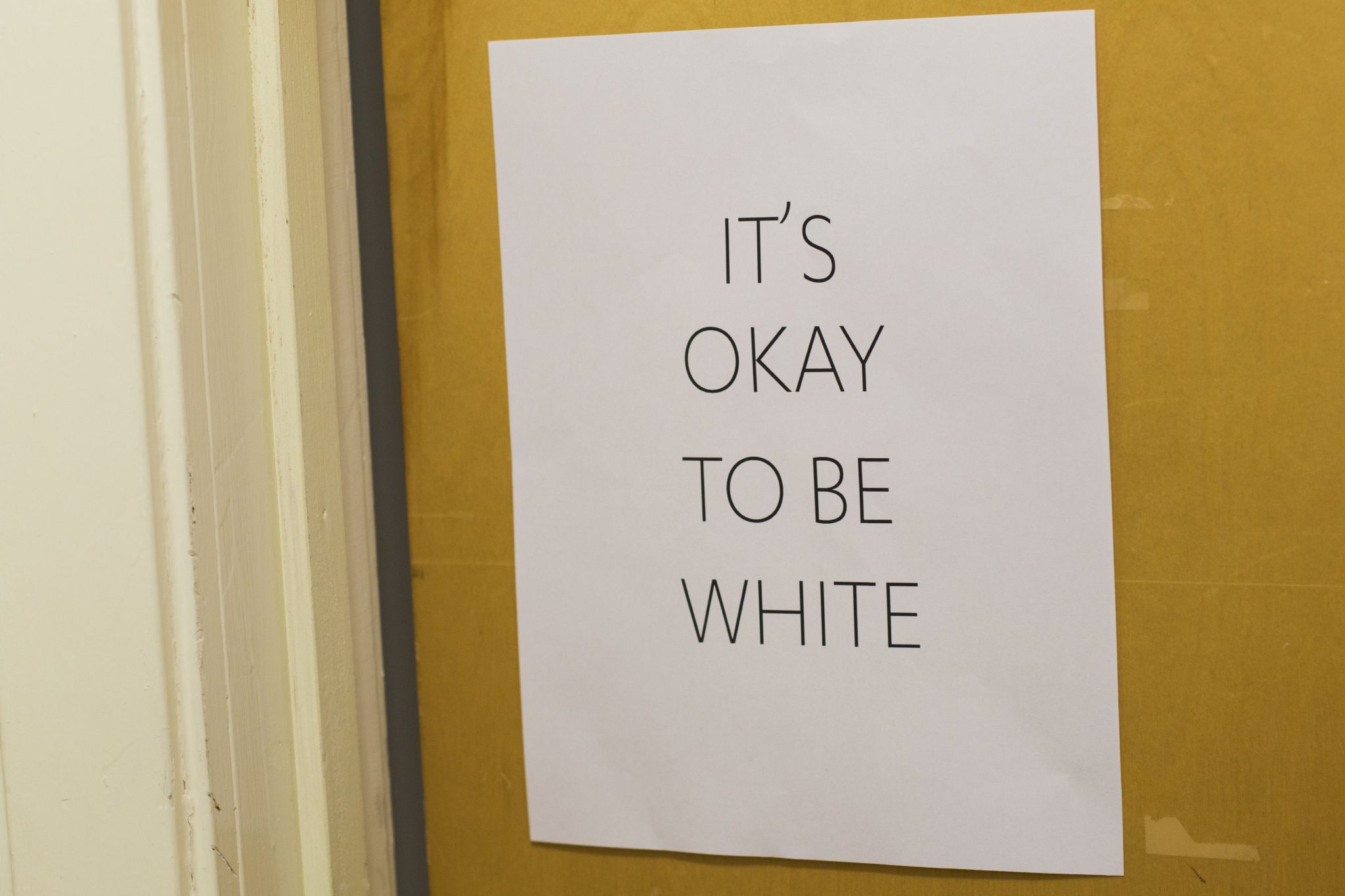
Inside Higher Ed reports that “It’s OK to Be White” posters have appeared on more campuses:
The posters, which also appeared a year ago at this time, are put up without permission [from college officials]. Posters have been seen this year at Christopher Newport University, East Tennessee State University, Oklahoma City University’s law school, Susquehanna University, and Western Connecticut State University.
The sentiment that “it’s OK to be white” is obviously protected by the First Amendment.
But at Western Connecticut State University, university president John Clark has threatened the unknown persons who posted flyers saying “It’s OK to Be White.” He says if they are students or faculty, they will face the “severest disciplinary actions, including dismissal as well as possible civil and criminal actions.”
The university says its officials immediately reported the flyers to local and state police and the FBI office in New Haven, all of whom were investigating who made the flyers on Friday.
Law professor Eugene Volokh, whose writings have been cited by the Supreme Court, notes “that the flyers consisted solely of the messages ‘It’s OK to be white’ and ‘Islam is right about women,’” and that “such messages are of course fully protected by the First Amendment.”
[The War Against White People]
Volokh is right. Even if these messages are viewed as racially or religiously inflammatory, they are still protected by the First Amendment. The federal appeals court with jurisdiction over Connecticut ruled in 1992 that a professor’s derogatory beliefs about black people were protected by the First Amendment. (See Levin v. Harleston, 966 F.2d 85 (2d Cir. 1992)). In 1990, it ruled that a professor had a First Amendment right to teach that Zionism is racism, even though that caused a “furor” on his campus. (See Dube v. State University of New York, 900 F.2d 587 (2d Cir. 1990)).
It is unclear what possible basis the FBI would have for investigating here. Federal law doesn’t forbid flyers that people find racially or religiously offensive, and laws against things such as littering are state laws, not federal laws enforced by the FBI.
In any event, Federal officials such as FBI agents must comply with First Amendment limits on their investigations. In 2000, a federal appeals court ruled that federal officials had violated the First Amendment by investigating citizens for 8 months over flyers and speech about a housing project for disabled people that allegedly exhibited prejudice. (See White v. Lee, 227 F.3d 1214 (9th Cir. 2000)). The court ruled that even if their speech was prejudiced, it was still protected by the First Amendment because it did not incite imminent lawlessness. Thus, it violated the First Amendment to subject them to a prolonged, speech-chilling investigation, even if federal officials thought that their speech violated a federal civil-rights law. The FBI should heed such rulings by not investigating flyers that say “It’s OK to Be White.”
These flyers may well have been posted in unauthorized places — the way flyers often are on college campuses. Violating such rules seldom carries any serious penalty, much less the “severest disciplinary action” that the university president threatens for the “It’s OK to Be White” flyers. The university cannot discriminate against these flyers based on their viewpoint by expelling or dismissing people for posting them, when it obviously would never expel or dismiss someone for posting flyers with a different viewpoint the university likes better, such as “It’s OK to Be Black.”
Even valid school rules, such as against posting flyers in the wrong place, or against littering or harassment, cannot be enforced against someone based on their viewpoint. A federal appeals court ruled that a conservative student could not be punished for violating a college’s broad harassment rule by videotaping someone in their office when a liberal student would not have been punished for the same kind of videotaping. (See O’Brien v. Welty, 818 F.3d 920 (9th Cir. 2016)).
Vicious threats against conservatives are one angle of attack for the left …
Feigned victimhood and feeling ‘ insecure ‘ in reacing out to ‘ law enforcement ‘ is just the other side of the posturing coin.
It employs the same manipulative logic that allows feminists to claim ‘ empowerment ‘ through weeping and emotional outbursts.
Once upon a time civil authorities as law ‘enforcement’ would reply that (accurately) that there is NO crime to pursue, or that the ‘violation’ would waste time and resources. Now, leos are more inclined to ‘intervene’ to ‘mediate’ the issues.
At the same time, conservatives are increasingly likely to tell the schools and the police to go pound sand. … and therein lies the danger to our civil society and even the republic.
These schools would be smart to be responding “Yes, of course, it’s OK to be white. Then what?” Instead they make it pretty clear that they definitely do not think it’s really OK to be white, thereby alienating a huge mass of people who otherwise would just yawn.
But if the university believes it is not okay to be white, don’t they have a right to ban the signs? It is a tough question. But to call in law enforcement is ridiculous. It is a campus matter, not a violation of law.
If the university is a public institution, no, it clearly has no right to ban expressions of opinion with which the officials of the institutions disagree. All public institutions are bound by the First Amendment. If it is a private institution, it can probably legally declare that it holds that it is not okay to be white, although since most private institutions receive public funds, this might place them in danger of violating anti-discrimination laws. Of course, any institutional restrictions on speech or thought violate the concepts of intellectual liberty and academic freedom.